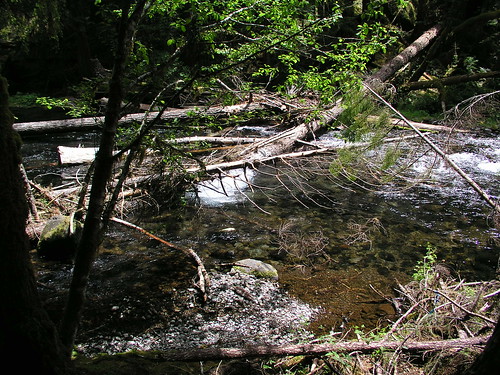
Stewardship of the land is a sacred principle for many American Indian tribes and Alaska Native villages. For those looking to create a conservation strategy, however, it is important to understand early on that the terrain doesn’t stop where your land ends. Through the Regional Conservation Partnership Program (RCPP), the USDA’s Natural Resource Conservation Service (NRCS) helps strengthen local collaboration and promotes a comprehensive, regional approach to landscape management.
NRCS recently offered a total of $24.6 million to seven (7) RCPP projects that will benefit Tribes:
1. Duck Valley Reservation Irrigation Improvement Project ($3,000,000)
Lead partner: The Shoshone-Paiute Tribe of the Duck Valley Indian Reservation
Through close collaboration with the local community, the Duck Valley project in Nevada and Idaho offers specific and achievable activities to upgrade irrigation systems, remove livestock from riparian areas, and restore stream banks. This project will not only improve water quality and the efficiency of irrigation use, but also will provide economic benefits to an underserved community.
2. Implementing Education, Outreach, and Conservation Practices on Tribal Land for Socially Disadvantaged Producers and Alaska Tribal Conservation Districts ($1,600,000)
Lead partner: Tyonek Tribal Conservation District
This project, which includes all eleven Alaska Tribal Conservation Districts (ATCDs), will extend the capacity of NRCS to provide service to ATCDs, and connects partners to enhance, preserve, and restore habitat used for subsistence resources – helping to preserve customs and traditions of Alaska Natives. The project has a strong monitoring component, and partners will collect data on subsistence resources and their habitat to establish baseline information and measure change over time.
3. Precision Conservation for Salmon and Water Quality in the Puget Sound ($9,000,000)
Lead Partner: Washington State Conservation Commission
Partners will use an ecosystem-wide methodology for targeting high priority areas to improve water quality and habitat for at-risk species, including Chinook salmon, bull trout, and steelhead. Within focus areas, a farmer-to-farmer approach will be used to increase participation and ensure buy-in from the local community. Opportunities to provide additional outreach to Hispanic and Asian producers and a strong consideration of Tribal needs are included in the project plan.
4. Yakama Nation On-Reservation Lower Yakima Basin Restoration Project ($4,600,000)
Lead Partner: Confederated Tribes and Bands of the Yakama Nation
This project addresses critical needs for the integrated conservation and restoration of fish and wildlife habitat, water quantity, and water quality on the Yakama Reservation in the lower Yakima River basin. The actions in this proposal will accelerate the recovery of threatened middle Columbia steelhead on the lower tributaries of the Yakima River, which currently produce more than 50 percent of the wild steelhead population in the Yakima basin. These actions will also benefit multiple other aquatic and riparian species, including chinook and sockeye salmon, Pacific lamprey, and important cultural plant species.
5. Hoonah Native Forest Lands Partnership ($2,000,000)
Lead partner: Sealaska Corporation (Alaska Native Claims Settlement Act Regional Corporation)
Regional-scale land management and conservation planning in Sealaska’s Huna Totem area will improve habitat for Salmon and Sitka Black-tailed Deer, timber production and enhance products such as blueberries and firewood. The work will benefit subsistence use by Native Alaskans and rural Alaskans as well as measure subsistence food gathering and reliance within the project lands. The success of this project will not only improve the ecological and economic sustainability of natural resources in the Hoonah community, but will provide a valuable conservation planning model for other communities.
6. North Central New Mexico Watershed Restoration Project ($2,400,000)
Lead partner: Claunch-Pinto Soil and Water Conservation District (SWCD)
Poor historic management of forest and riparian watersheds, combined with the effects of climate change, are creating a dire situation in New Mexico. Wildlife, fish, acequias, rural economies, tourism and outdoor recreation are all at risk from the associated impacts of watershed wildfires. Without a large scale watershed solution wildfire will threaten more communities within the Wildland Urban Interface. Claunch-Pinto Soil and Water Conservation District (SWCD) and its partners have identified over 35,000 acres for forest restoration treatments on private, public, state and tribal lands that are located within the upland ponderosa pine, pinon, and juniper watersheds as well as riparian lands in the lower elevation.
7. Confederated Tribes of the Colville Reservation Water Quality and Habitat Improvement Project ($2,000,000)
Lead partner: Confederated Tribes of the Colville Indian Reservation
The project focuses on reducing soil erosion and stream sediment by repairing or removing stream crossings, decommissioning forest roads, installing road drainage and protecting wetland/riparian areas. In addition, this project will improve range conditions through feral horse management and improve wildlife habitat for the sharp-tailed grouse and Columbia River redband trout.
The 2014 Farm Bill created the Regional Conservation Partnership Program and we were impressed with the Tribal applicants in this first round. In total, (16) Tribes are participating on projects as a lead or a partner throughout the country. Applications for the program will be accepted on a yearly basis. If you or your Tribe is interested in applying, I encourage you to contact your District Conservationist to learn more about the application process and how you can strengthen your application.
The Office of Tribal Relations serves as a singular point of contact for Tribal issues and concerns in the USDA. We are always available to hear your stories at Tribal.Relations@osec.usda.gov.
